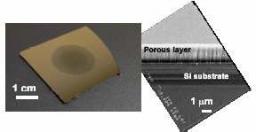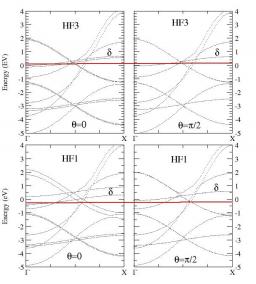2007
1Groupe Matière Condensée et Matériaux, UMR-CNRS 6626, Université de Rennes 1, 35042 Rennes, France
2 Laboratoire d’Optronique, FOTON, UMR-CNRS 6082, 22302 Lannion, France
3 Laboratoire Léon Brillouin (CEA-CNRS), CEA . Saclay, 91191 Gif-sur-Yvette Cedex
Anisotropic quenched disorder effects on a liquid crystal confined into nanochannels
Intense experimental and theoretical efforts have focused on quenched disorder effects in condensed matter as they bring about some most challenging questions of modern statistical physics. Most universal features of quenched disorder effects can be envisaged in the frame of random field theories. From this standpoint, liquid-crystals (LC) confined in random porous materials are definitively recognized as paradigm systems, which allows one to address experimentally general questions on phase transitions, critical scaling and non-ergodicity in the presence of quenched random fields. (More...)
Spin electronics is an emerging science which aims at using the spin of the conduction electrons in electronic devices. In a near future, the fundamental mechanisms of spin transport will be affected by some physical limits linked to a further size reduction towards the nanometer scale. It is thus fundamental to understand these limits and more generally the physics of magnetism and transport in reduced dimensions.
Metal-metal nanocontacts are crucial in many areas, but have been poorly investigated from the point of view of local magnetism. This is a very appealing research domain, since local magnetism will greatly influence the (ballistic) conductance across a nanocontact. The break junction technique is a tool that allows the creation of stable (several hours) atomic contacts, which consists in breaking a material in a controlled manner by bending it until eventually a single atom contact appears between the two surfaces. Once a stable configuration is obtained the resistance can be measured as a function of an applied magnetic field. Michel Viret (CEA, SPEC) showed that in magnetic materials such as Fe, Co or Ni, one can obtain large magneto-resistive effects [1].












